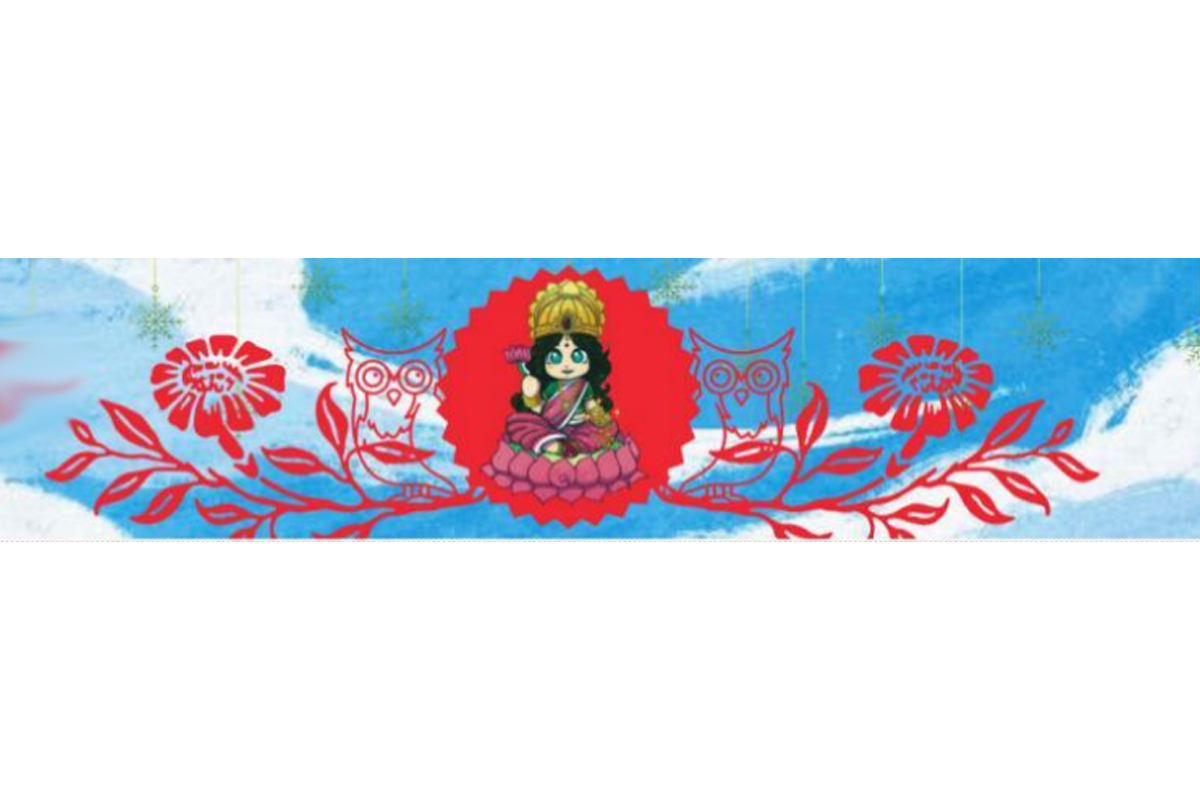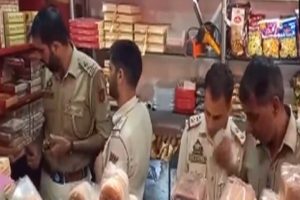As we Bengalis try to come around to the fact that Durga Puja is over and we have to wait another 365 days for the arrival of Maa Durga, a sliver of good news is that the festivities are not over just yet. While during Diwali, the northern side of India worships Lakshmi, the goddess of wealth and prosperity, in the Bengali community, Kojagari Lakhsmi puja happens right after Durga puja on Kojagari Purnima (full-moon) in the month of Ashwin. The Bengali word ‘kojagari’ means ‘one who is awake’ or a night of staying awake.
The puja usually happens in the evening, and there is a stark belief that Goddess Lakshmi visits the home of the worshippers at night, and whoever stays awake is blessed with prosperity and success. Some Bengali households worship Lakshmi idols, while others worship ‘dhaner chhora’ or fill a metal pot with rice grains.
No Bengali festival can ever be concluded without food; the gastronomical tradition related to Lakshmi puja differs from household to household.
Bengalis who migrated from East Bengal worship Lakshmi by offering jora Ilish(a pair of Hilsa fish) on this day. While ‘khoya’, ‘payesh’, ‘murkhi’, and the evergreen ‘bhog’ of ‘khichuri’, ‘labra’, five types of ‘bhaja’ are a staple, no Kojagari Lakshmi Puja can be complete without ‘narkel naru’ made by the loving hands of our mothers and grandmothers (although they are now readily available in markets).
“My mother and grandmother used to stay awake the night before Lakshmi puja preparing gurer naru, chini’r naru, teel’er naru. Because we were from East Bengal, our family used to worship dhaner chora. Apart from different sweets and naru, my mother used to make five types of bhaja, luchi, alur dom, and payesh. Those days were so much fun; relatives used to visit, neighbours and friends used to come, it was not just a festival or a puja, it was a celebration and reunion as well.” says Noopur Ghosh, a homemaker.
FOR OUR READERS, HERE ARE SOME SPECIAL LAKSHMI PUJA RECIPES TO ADD TO YOUR PUJA ‘BHOG’ OR JUST FOR YOUR OWN DELIGHTFUL GASTRONOMICAL EXPERIENCES.
Narkel Naru
Ingredients: 2-3 whole coconut (freshly grated), 400-450 g of gur (cane jaggery/sugarcane molasses), 1 tablespoon of cooking oil (to grease both palms) Half cup water.
Cooking Instruction:
1. Take a pan, add the gur and the water (if you are using liquid gur, use a little bit of water, and keep the flame on low so that it does not burn). You could also add 1 cup milk instead of water along with the gur.
2. After the solid mass of gur has melted (for liquid gur, let it simmer slightly), add the grated coconut and stir it until the mixture becomes sticky.
3. Take the mixture off the flame, grease your hands with oil, and let the mixture cool a little bit (not too much; otherwise, the mixture will get hard and make it difficult to round it into balls). Now, take a small amount and start making tight balls with it. Store it in airtight containers.
Note: Narkel naru can also be made using sugar instead of gur. For sugar-based narkel naru, boil 1 cup full cream milk and, add sugar to it, let it melt. Then follow the step of adding grated coconut and stirring it until it becomes a sticky mixture. For people who have diabetes or are on a diet but cannot give up on this sugary delight, replace gur and sugar with stevia.
Channar payesh
Ingredients: 300g homemade cottage cheese (chana, make it by curdling milk at home), 3 cups full cream milk (full cream gives the payesh a creamy, thick consistency), 2/3 cup sugar (you can add less sugar if you like it less sweet), 10-15 cashew nuts and raisins and half-crushed pistachios (optional), ½ tsp cardamom powder, Add 3-4 strands of saffron in warm milk and let it soak (optional)
Cooking Instruction
1. Take the freshly made cottage cheese ‘chana’ and mash it well. You could keep it this way, or make small balls as we see in ‘rasmalai’.
2. Now, take a heavy pan and boil the milk, stir it continuously and let it boil until it reduces and becomes thick and creamy. Make sure to scrape off the sides (that is where the magic lies). Now add the sugar, the saffron milk (optional) and the cardamom powder and continue stirring.
3. After 5 minutes, add the mashed ‘chana’ or the ‘chana’ balls, and continue cooking in low heat for another 5 minutes.
4. Add the cashews and raisins(optional) and turn off the gas. Let it cool. You could either serve it chilled or right after it has cooled down.
Shahi aloo dum
Ingredients: 500 g small potatoes or big potatoes cut in half, 4 tbsp mustard oil, 2 bay leafs, 2 cardamom and 2 cloves, 1 cinnamon stick, 1 tsp cumin seeds, 1 tbsp ginger paste, 5 tbsp cashew nut paste, Salt as per taste, 1 to 2 tbsp sugar -½ tsp turmeric powder, 1 to ½ tsp chilli powder (depending on spice tolerance level), 1 tsp cumin powder, 1 ½ tsp coriander powder, 1 ½ cup whisked curd -Kasuri methi
Cooking Instruction
1. Peel and wash the potatoes, marinate them with a little bit of turmeric and salt and then deep fry them.
2. Put the fried potatoes aside. Now, take mustard oil in a thick-bottomed pan, heat the oil and then add the bay leaf, cardamom, clove, cinnamon stick and cumin seeds and let it splutter. Now lower the flame, add the ginger and fry it until the raw smell goes away.
3. Now add a bit of water and add the turmeric, chilli powder, cumin and coriander powder and cook it until a bit of oil surfaces. Add the cashew nut paste and cook for some time. Now add the whisked curd, stir it and let the masalas cook.
4. Now add one cup of water, salt as per taste and let it simmer.
5. Slowly add the potatoes and a little bit of sugar and cook it for another 5 minutes. The consistency of the gravy should be thick.
6. Add garam masala and drizzle some cream (optional). Serve it hot.











